Quick Facts: Atmospheric Ozone Depletion
|
1. Atmospheric ozone encircles the globe, providing a protective barrier against harmful solar UV-B radiation for all living things on the earth's surface. Life appeared on the earth’s surface only after this thin protective layer of ozone developed. |
|
|
| 2. Without this protective layer of ozone in the stratosphere, UV-B radiation causes a variety of health problems for most living things: skin cancers, cataracts, and immune suppression in humans; changes in plant growth rates, form, and development; orientation and motility in phytoplankton - the base of the food chain for ocean creatures; and damage to early developmental stages of fish, shrimp, crabs, amphibians. |
|
|
|
3. Beginning in the 1930's, industry began using new chemical agents called CFCs (chloro-fluoro-carbons) for such innovations as aerosol sprays, refrigeration and air conditioning.
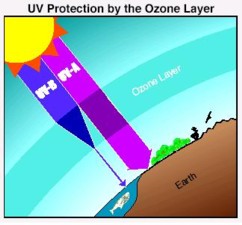 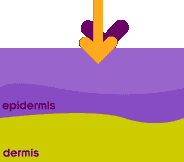 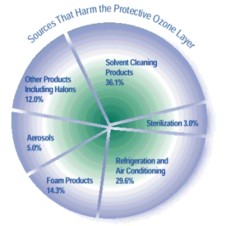 |
|
|
|
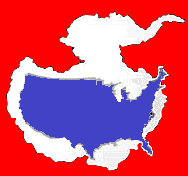 4. A theory of ozone depletion by CFCs was published in Nature Magazine in June, 1974. Despite these warnings, by 2000 these chemicals had reduced the ozone layer by as much as 66% over Antarctica. This created an ozone hole (the white area in the figure at the right) equivalent in area to that of the continental United States. 4. A theory of ozone depletion by CFCs was published in Nature Magazine in June, 1974. Despite these warnings, by 2000 these chemicals had reduced the ozone layer by as much as 66% over Antarctica. This created an ozone hole (the white area in the figure at the right) equivalent in area to that of the continental United States. |
|
|
|
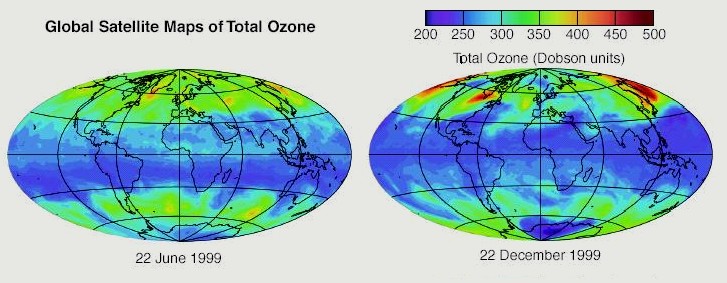 5. Ozone depletion is greatest at the poles, but occurs hardly at all near the equator. At temperate latitudes, where most people live, ozone depletion is sufficient to produce a variety of documented human health problems, and crop damage. 5. Ozone depletion is greatest at the poles, but occurs hardly at all near the equator. At temperate latitudes, where most people live, ozone depletion is sufficient to produce a variety of documented human health problems, and crop damage.
|
|
|
| 6. Unchecked, the depletion of atmospheric ozone will eventually affect all life on the surface of the earth. Protection from more intense UV-B radiation would require humanity to either live underground, under several meters of water, or wear protective clothing over every inch of our body. |
|
| 7. Industry pressure and initial scientific skepticism, prevented action by governments until the 1985 Vienna Convention. The efforts of scientists and public opinion led governments to negotiate a number of international treaties to regulate and eventually eliminate the various chemical agents that destroy atmospheric ozone. |
|
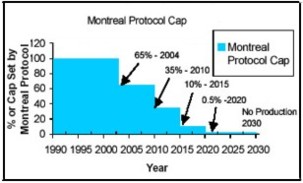 8. The Montreal Protocol was the international communities response to the threat posed by atmospheric ozone depletion. Today, the global production of CFCs has been banned in developed countries and is scheduled to be phased out in developing countries by 2010. To date, production of banned ozone depleting chemicals has been reduced by 90%. Other ozone depleting chemicals are scheduled to be phased out by 2030. However, use will continue long after production is banned. 8. The Montreal Protocol was the international communities response to the threat posed by atmospheric ozone depletion. Today, the global production of CFCs has been banned in developed countries and is scheduled to be phased out in developing countries by 2010. To date, production of banned ozone depleting chemicals has been reduced by 90%. Other ozone depleting chemicals are scheduled to be phased out by 2030. However, use will continue long after production is banned. |
|
|
| 9. Even if this reduction in ozone depleting chemicals occurs on schedule, it will take at least 50 to 100 years for the atmospheric ozone layer to return to its state before 1980. This is because once released, these ozone depleting chemicals continue to destroy atmospheric ozone for many years. The most common agents (CFCs) remain active for approximately 50-150 years. |
|
| 10. Some ozone depleting chemicals are also greenhouse gasses, such as HFCs. The greenhouse effect also impacts ozone depletion since heating of the atmosphere affects dynamics of the stratospheric ozone layer. |
|
| 11. The story of the depletion of atmospheric ozone is a simple example of how a seemingly useful and benign kind of material throughput very quickly led to the serious degradation of a global ecosystem that supports all terrestrial life, including humans. The scale of certain types of economic activity (the production and sale of ozone depleting chemicals), threatens the health and survival of plant and animal life on the earth’s surface. This destruction will continue until at least 2050 because of the long life of these chemical compounds. |
In Brief: The Atmospheric Ozone Depletion StoryAtmospheric ozone depletion is one of the most dramatic examples of how human economic activities began destroying a life supporting ecosystem, and did so over a relatively short period of time – just a few decades. The ozone layer in the upper stratosphere covers the globe and protects all terrestrial life forms from solar Ultraviolet (UV) radiation. Without this thin protective layer over the globe, these UV rays would make life on the surface of the earth virtually impossible. Indeed, life did not emerge on the earth’s surface until after this protective ozone layer formed hundreds of millions of years ago.
In the 1930’s ozone depleting chemicals (ODCs) were developed for commercial use, largely in aerosol applications and for refrigeration. CFCs (chloro-fluoro-carbons) were the most common of these ODCs, and their production increased dramatically as refrigeration technologies spread across the globe over the next several decades. In 1974 a scientific paper was published which raised concerns about the impact of CFCs on atmospheric ozone. Predictably, the industries using these chemicals denied the validity of these theories and did what they could to discredit the scientists who were sounding the alarm. This allowed political decision makers to also ignore the scientists – at least for a while.
The rapid increase in ODC production led to a thinning of atmospheric ozone, largely over the poles, and hardly at all in the tropics. By 2000 thinning was most pronounced at the poles, and a hole roughly the size of continental United States appears over Antarctica under certain climatic conditions. While the ozone holes over the poles have received the most media attention, it should be noted that significant thinning also has occurred over the northern and southern temperate zones, where most of the human population lives. A variety of negative human, animal and plant health impacts have already been noted. Unchecked, the continued production and use of ODCs would have significantly altered life on earth.
Fortunately, the scientists involved, along with various civil society organizations and ordinary citizens, eventually convinced the relevant governments to take action. Through a series of international agreements the production of various ODCs has been banned, limiting the further destruction of the ozone layer. Refinements to these international agreements are ongoing, as new ODCs are identified, and issues such as smuggling of ODCs are discovered.
Despite the successes of these international agreements, the protection provided by the ozone layer will not return to its pre-ODC levels until at least the 22nd century. This delay in returning to its former level is due to the long-acting effect of many ODCs. CFCs, for example, once they enter the stratosphere, remain active for approximately 100 years. In the meantime, increased human health impacts, as well as negative impacts on a variety of plant and animal species will continue.
The apparent success of the international treaties regulating ODCs seems to have at least slowed the damage done to the protective ozone layer. By the standards of geopolitics, these treaties occurred relatively quickly, despite initial objections from the industries involved. Nonetheless, hundreds of thousands of additional cases of skin cancer, cataracts and human immune suppression occurred over the short time it took to recognize and respond to the problem.
Despite the success of international treaties reducing the production of ODCs, there are important questions that remain unanswered. We do not know if some irrevocable damage to a critical life supporting ecosystem service has already occurred, but not yet been identified. Nor do we know if ongoing ozone depletion will cause irrevocable damage in the future. Nor do we know how the ongoing depletion will impact other areas of concern, such as climate change or biodiversity loss.